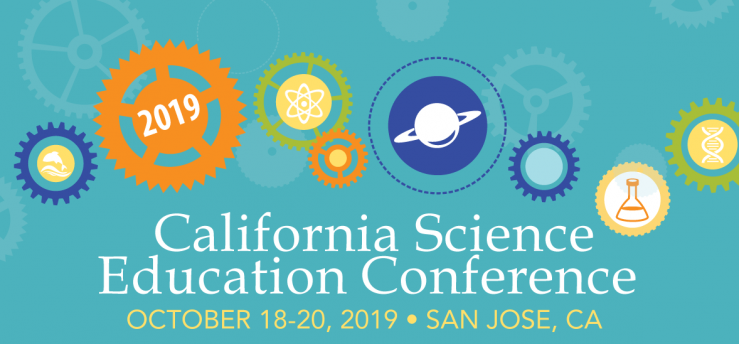Re-Novicing of Science Teachers and the Science Coach
Over the past several months I’ve presented on and heard from others on how the implementation of the NGSS is going both within California and nationally. In the process, I’ve taken away some learnings that I thought I’d share. One is that, as schools and districts make progress toward implementing the NGSS, having a science coach as a part of the district team can be a key strategy to support both teachers and administrators in achieving the vision of the NGSS. Call them a science coach, teacher leader, TOSA, or whatever – they are the ones holding a myriad of things together so that NGSS Implementation can move forward. In the best of situations, this is partnered with informed administrators at all levels that work closely with the science coach – the coach providing the specific science and NGSS knowledge, the administrators moving supportive policies and procedures forward, removing barriers, and opening opportunities. In ideal situations, with supportive administrative leadership, science coaches are able to keep an eye on the vision for NGSS implementation for themselves and with others, stay informed, maintain momentum, and support teachers.
Why do I start with the idea of the science coach and shared leadership? Because implementing the NGSS is no simple or quick undertaking, it requires a system change. It requires a critical team at the helm to guide the transition. In the case of the NGSS, one of the biggest changes that occurs is the “re-novicing” of the science teacher.
Bear with me…
I recently attended a meeting at the National Academy of Sciences where science education leaders from across the country and spectrum (science researchers, supportive partners, to practitioners) met to provide an update on NGSS Implementation. This is where I first heard the idea of re-novicing of the science teacher. Sean Smith of Horizon Research, summarizing reporting from one of the session rooms, commented that the NGSS has had this effect (Sean originally heard the phrase in a different context from a colleague, Debi Hanuscin of Western Washington University). Quite frankly, considered in the context of the NGSS, it caused us all to take pause.
Make no mistake, science teachers (and I’m also talking to you, elementary teachers) are experts in what they do. They have certificates, degrees, even awards. Most have years, even decades of experience in helping students achieve. So, what’s new? Unlike expectations for science instruction in the past, the NGSS has so much “newness.” It is asking for a radical shift in both HOW students achieve and the vision that ALL students achieve.
We’ve all heard science teachers express the idea that, “I have already been doing NGSS, I just need to add crosscutting concepts” or “this isn’t any different from how I’m teaching my students other than they’ve switched around my content,” or “I’m adding in CER [claim-evidence-reasoning], so I’m doing NGSS.” We all understand that these teachers are peeling away the first layer of the onion and haven’t had the opportunity yet to understand the nuances and depth, the complexity, and the beauty of the NGSS. Even under the scenario of best science teacher the school has ever seen and their kids are getting into college, NGSS requires far more than that first step of the teacher; it requires a full-blown sticky, spiky, hairy transformation in all aspects of science planning, curriculum, instruction, and assessment on top of a change in culture at the classroom, school, and district levels. Rooted in a deep body of research in how students learn (that wasn’t available until after our last science adoption in the ’90s), it requires a complete pedagogical shift where STUDENTS are the drivers of the learning working to explain phenomena and solve problems. STUDENTS are the ones recognizing the utility of the crosscutting concept in helping them make sense of the patterns in their data. STUDENTS recognize that their reasoning is insufficient to explain their evidence and readjust, etc. Teachers are critical in this process, facilitating the learning, rather than “telling.” This type of shift requires an overhaul in the planning for instruction, the materials used in instruction, how instruction plays out in the classroom, and how student learning is monitored – and consequently, a change in how we view what is needed to support this. There’s “newness” in this for everyone. This has caused the re-novicing.
This brings me back to the science coach. In light of this effect on teachers, the question has been posed at several meetings, why are some places building momentum, moving their teachers forward, and finding successes with NGSS implementation – and some not? Well, first of all, you have to start moving. For those that have, some trends emerge:
- You need a clear vision and plan for implementation over the long-term (there is no quick fix).
- High-quality professional learning for teachers is required to move them on the continuum from re-noviced state to experienced and should be on-going. Supporting the shift to the NGSS can’t be “fixed” in a three-hour PD and should be as close to the classroom as possible (think lesson study). This should be on-going well past the adoption of instructional materials as no materials will be perfect and beyond when teachers begin to understand and work with what monitoring student progress and assessment in the NGSS looks like.
- Administrators play a clear role in NGSS implementation and, themselves, need high-quality professional learning as they have an important role in guiding and supporting science teachers along this novice-experienced implementation continuum.
- Dedicated, sustained funding is needed to support the work and the resources science teachers and students need.
- Relationships are critical – build a network of support – strong science leadership is key.
It is becoming clear that in many situations where progress is being made, in addition to district and site administration, leadership from a science coach can make all the difference. Not having to be immersed in daily classroom issues or administrative duties, they can attend to the factors that lead to more successful implementation. They foster the critical relationships needed to be successful. They work to make sure the plan and vision is being implemented. They recognize and, in many cases deliver, the on-going professional learning needed to support science teachers (which requires that they, themselves, are up to date and participate in trainings offered by their counties, the CANGSS Collaborative – think statewide rollout, CSTA, and other sources). They seek outside partner support when needed. They inform as well as advocate on behalf of their science teacher peers at the site and district level. They are also the best poised to hold the hands of their peers, in such a vulnerable re-noviced state, and help move them, gradually shifting their practice along a continuum toward that of an expert.
There’s no one path to success. Every district is different and has circumstances that are unique. But it’s no secret that in times like these, we all could use a friend in our corner – it’s much too challenging if this only falls on the backs of teachers. Hold your science coaches close, leverage their expertise, fight for them to be supported. Empower them to empower you.









